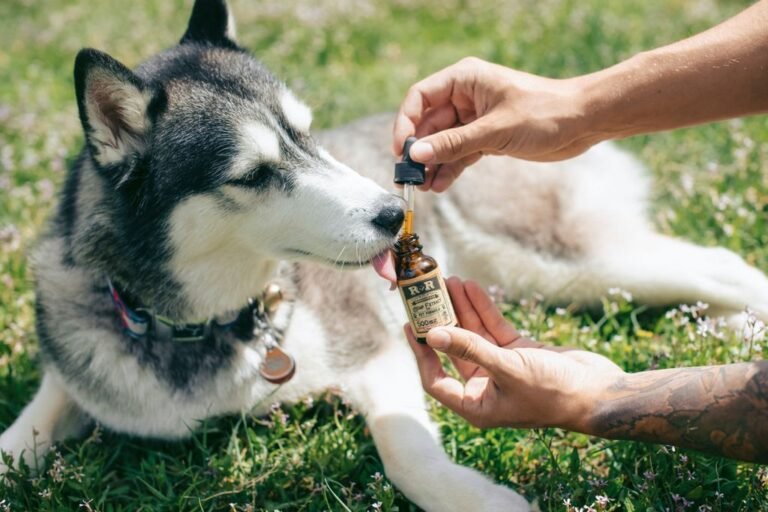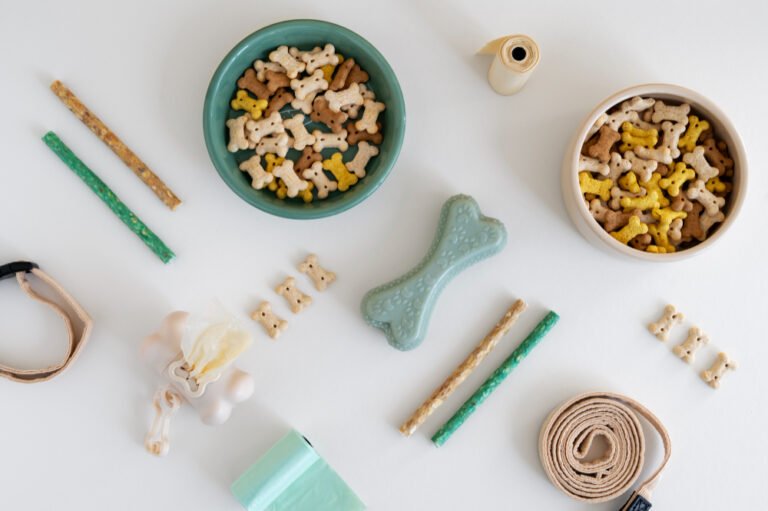Traveling with Pets: Tips to Ease Their Stress
Traveling with pets can be a delightful experience, allowing you to create lasting memories with your furry companions. However, it also requires careful planning and consideration to ensure the safety, comfort, and well-being of your pets throughout the journey. In this article, we will provide essential tips to ease their stress and make the travel experience enjoyable for both you and your furry friend.
Key Takeaways
- Choose the right carrier for your pet
- Pack essential supplies for your pet’s comfort
- Update vaccinations and ID tags
- Create a familiar environment for your pet
- Keep your pet hydrated and fed
Preparing for the Journey

Choosing the Right Carrier
When it comes to choosing the right carrier for your pet, there are a few key factors to consider. First, opt for a carrier made of rigid material, as it provides greater stability and protection compared to carriers made from fabric or soft materials. Look for a carrier that has a top that can be lifted off and a front door for easy access. This type of carrier is not only convenient for you but also allows your pet to enter and exit comfortably. Introduce your pet to the carrier slowly by leaving it in a central area of their territory. Reward their first approaches with words of praise or a gentle stroke. By taking these steps, you can ensure that your pet feels safe and secure in their carrier, making the journey much more comfortable for both of you.
Packing Essential Supplies
When preparing for your journey, it’s important to pack the essential items for your pet. These include a small amount of dry food, a small collapsible bowl, medications and first aid items, travel documents like a rabies certificate, a favorite soft toy, blanket, or pillow, treats and dental chews, and your veterinarian’s contact information. Amazon herbal dog grooming products can also be a great addition to your pet travel kit. Depending on the mode of transportation, make sure to pack these items to ensure your pet’s comfort and well-being. It’s also a good idea to check the weather and environmental conditions of your destination and pack collapsible water bowls, treats, toys, rain jackets, and swimming safety vests if needed. Remember, keeping your pet’s diet consistent during travel can help avoid stomach upsets, so try to stick to their accustomed diet for a while after arrival. By packing these essential supplies and considering your pet’s comfort, you can make the travel experience enjoyable for both you and your furry friend.
Updating Vaccinations and ID Tags
Before traveling with your pet, it’s important to ensure that their vaccinations are up to date. Schedule a visit to your veterinarian to discuss any concerns you may have about travel and to make sure your pet is protected against common diseases. Additionally, make sure your pet wears a collar with an ID tag containing your contact information. This will help ensure that your pet can be easily identified if they were to get lost during the journey. It’s also a good idea to carry essential documents such as proof of vaccinations, health certificates, and microchip details. These documents may be required during travel, especially if you’re crossing international borders.
Making the Travel Experience Comfortable

Creating a Familiar Environment
Try to maintain a sense of familiarity during your travels. Stick to your pet’s regular feeding and walking schedule as much as possible. Bringing along familiar items, such as their bed or a favorite toy, can also provide a sense of comfort in new surroundings. By following these pet-friendly travel tips, you can ensure a stress-free and enjoyable adventure for both you and your furry friend. Remember that patience and flexibility are key, and with proper preparation, you can create wonderful travel experiences that include the entire family, pets included.
Keeping Your Pet Hydrated and Fed
Just like their human counterparts, pets should not have heavy meals before flying. Feed your pet between 3-4 hours prior to leaving. Be sure to give your pet a bathroom opportunity close to departure time. Keep Your Pet Hydrated and Fed, But Not Full: Just like humans, pets get dehydrated while traveling and during flights due to the plane’s air filtration system. If possible, give your pet some bottled water to drink during the flight, but not an excessive amount as that will increase the chance of a messy accident. If you are unable to monitor your pet’s in-flight hydration, you should ensure they get rehydrated immediately after the flight. Be aware that drinking water that comes from a place your pet isn’t used to can cause digestive problems. On other modes of transportation, like buses and trains, water may not be easily accessible, so find out if you can carry bottled water for your pet. If not, make sure to plan for regular breaks to allow your pet to drink water and stay hydrated throughout the journey.
Providing Adequate Exercise and Rest
During the journey, it’s important to prioritize your pet’s comfort, whether you’re traveling by car or plane. For car travel, secure your pet in a well-ventilated carrier or a pet seatbelt. If you’re flying, check the specific airline’s pet travel policies and invest in an airline-approved carrier that provides ample ventilation and meets size requirements. Plan regular breaks and exercise for your pet, just like humans. Make stops along your route for bathroom breaks, stretching, and short walks. This not only allows your pet to relieve themselves but also helps them burn off energy, making them more relaxed during the journey. Be mindful of extreme temperatures, as they can be challenging for pets. In hot weather, avoid leaving your pet in a parked car, even with the windows cracked. In cold weather, provide adequate warmth and protect your pet’s paws from icy surfaces. Research pet-friendly activities and accommodations along your route to include your pet in your travel itinerary. These breaks not only provide physical well-being but also mental stimulation and reduce stress.
Ensuring Safety and Security

Securing the Carrier Properly
To ensure the safety and comfort of your cat during each journey, it is important to properly secure the carrier. Make sure the carrier is stable and does not move during the journey. Avoid talking in a loud voice or playing the radio at a high volume, as this can cause stress for your cat. Additionally, controlling the temperature inside the carrier is crucial. Be mindful of the temperature to prevent your cat from overheating or getting too cold. You can cover the carrier with a towel or piece of clothing to create a cozy and calming environment. Remember, the carrier can eventually become a safe haven for your cat, so it is important to introduce them to it gradually and associate it with positive experiences. Reward your cat’s first approaches with words of praise or a stroke, and take the time to let them get used to being in the carrier at home.
Keeping Your Pet Calm and Relaxed
Traveling can be overwhelming for pets, especially if it’s their first time. Stay calm, patient, and reassuring throughout the journey. Offer treats and gentle praise to encourage positive behavior. Your soothing presence can significantly reduce your pet’s anxiety and make the travel experience more pleasant for both of you.
Remember to provide shade and ventilation during cooler times of the day. Stick to your pet’s regular feeding and walking schedule as much as possible. Bringing along familiar items, such as their bed or a favorite toy, can also provide a sense of comfort in new surroundings.
By following these pet-friendly travel tips, you can ensure a stress-free and enjoyable adventure for both you and your furry friend. Remember that patience and flexibility are key, and with proper preparation, you can create wonderful travel experiences that include the entire family.
Avoiding Extreme Temperatures
Extreme temperatures can be challenging for pets. In hot weather, avoid leaving your pet in a parked car, even with the windows cracked. In cold weather, provide adequate warmth, and protect your pet’s paws from icy surfaces. Be mindful of the climate of your destination and plan accordingly.
Navigating Air Travel with Pets

Understanding Airline Policies and Requirements
Understanding airline policies and requirements is crucial when traveling with your pet. Each airline has specific guidelines that you must follow to ensure a smooth and stress-free journey for both you and your furry friend. It’s important to familiarize yourself with these policies before your trip to avoid any surprises or complications.
Here are some key points to keep in mind:
- Check the airline’s website for their pet travel policies and procedures. Most airlines have dedicated web pages that provide detailed information on traveling with pets.
- Make sure your pet meets the weight, size, and species requirements specified by the airline. Different airlines may have different restrictions, so it’s essential to double-check.
- If your pet needs to travel in the cargo hold, ensure that the carrier is secure and meets the airline’s guidelines. This will help keep your pet safe and comfortable throughout the journey.
Remember, a relaxed cat is a happy cat. By understanding and adhering to the airline’s policies and requirements, you can ensure a stress-free and enjoyable travel experience for both you and your feline companion.
Preparing for Security Checks
Before you board the plane, there are a few important steps to take to ensure a smooth experience for you and your pet. First, make sure to arrive at the airport with plenty of time to spare. This will give you the opportunity to check in with an agent and go through the necessary security procedures. Remember to bring all the required identification papers and tags for your pet. It’s also a good idea to schedule a pre-trip checkup with your veterinarian. They can ensure that your pet is up to date on vaccinations and provide any necessary certificates or tests. Additionally, consider arranging a quick trip or test drive to gauge your pet’s reaction to travel. This can help you make any necessary adjustments to your plans and gear. Finally, it’s recommended to book a non-stop flight if possible, as this can help reduce the stress of handling for your pet.
Managing Pet Anxiety during the Flight
To manage your pet’s anxiety during the flight, there are several strategies you can try. First, create a familiar environment by using pheromones to create a soothing atmosphere. This can help ease your pet’s anxiety during travel. Additionally, opt for a well-ventilated and cozy carrier for your pet. Having a secure and comfortable space can significantly reduce stress. Consider using interactive travel toys to keep your pet engaged and distracted during the flight. Finally, take a relaxing walk with your pet before boarding the plane. This will help both of you expend excess energy and make for a peaceful journey.
Navigating Air Travel with Pets can be a stressful experience for both you and your furry friend. At Whisker Wellbeing, we understand the importance of providing holistic and natural care for pets, even when they are on the go. Our mission is to enhance the physical and emotional quality of life for cats and dogs, and that includes making air travel as comfortable and safe as possible. With a range of products, including CBD, hemp, and other natural options, we have everything you need to ensure your pet’s well-being during their journey. Visit our website, Whisker Wellbeing, to explore our products and learn more about how we can help your pet thrive. Together, let’s make air travel a positive experience for your furry companion.
Conclusion
In conclusion, traveling with pets can be a rewarding and enriching experience when approached with care, preparation, and patience. By following these pet-friendly travel tips, you can ensure a stress-free and enjoyable adventure for both you and your furry friend. Remember to maintain a sense of familiarity by sticking to your pet’s regular schedule and bringing along familiar items. Stay calm and patient throughout the journey, offering treats and gentle praise to encourage positive behavior. With proper planning and consideration, you can create wonderful travel experiences that include the entire family.
Frequently Asked Questions
Can I travel with my pet in the cabin?
It depends on the airline and the size of your pet. Some airlines allow small pets in the cabin, while others require them to be transported in the cargo hold.
What documents do I need to travel with my pet?
You will typically need a health certificate issued by a veterinarian, proof of vaccinations, and identification tags with your contact information.
How can I keep my pet calm during the journey?
You can keep your pet calm by creating a familiar environment with their favorite toys and bedding, using pheromone sprays or diffusers, and providing plenty of exercise and mental stimulation.
What should I do if my pet gets motion sickness?
If your pet gets motion sickness, you can try feeding them a light meal a few hours before the journey, using anti-nausea medication prescribed by a veterinarian, or using natural remedies like ginger or lavender.
How do I secure the carrier properly?
Make sure the carrier is sturdy and well-ventilated. Use seat belts or secure the carrier with straps to prevent it from moving during the journey.
What should I do if my pet gets injured or sick during the journey?
If your pet gets injured or sick during the journey, seek veterinary care as soon as possible. Have a list of emergency veterinary hospitals or clinics along your travel route.






